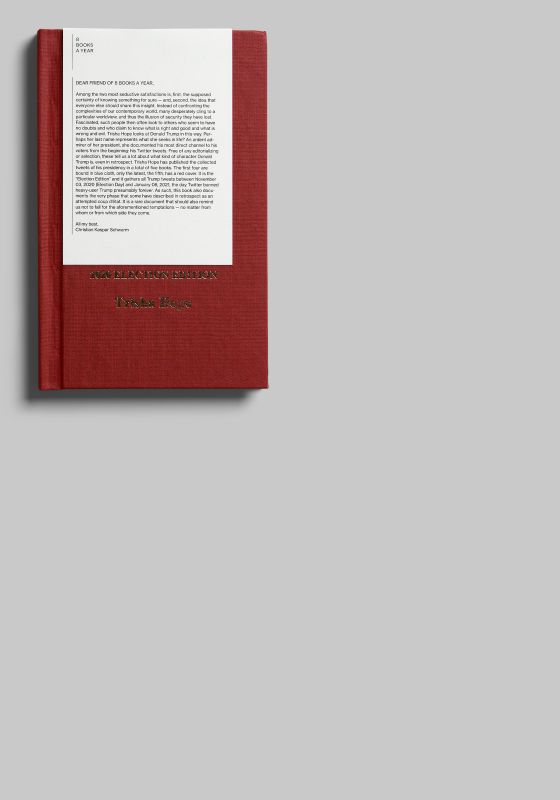AUGUST 2022

Independent Collectors & BMW
The seventh BMW Art Guide by Independent Collectors
Hatje Cantz, 2022
Dear friends of 8 books a year,
Do you know any art collectors? If so, please don‘t make the mistake of trying to pigeonhole them all. That‘s often been done by the me- dia already, which almost always describes this species of people as rich, solitary and competitive. As a co-founder of “Independent Collectors” (another one of my passion projects), I have had the pri- vilege of getting to know a great many collectors over the years. The only thing they all have in common: their individuality, i.e. their unique- ness. Granted, there are also striking show-offs among them – but there are also extremely modest, pretty wise personalities who use art as a means to sharpen their perspective of the absurdities of our world. There are exceptionally wealthy collectors, but there are also those who, in order to acquire their next work of art, forego many things that others take for granted. There are those who (figuratively speaking) hide behind high walls and thick doors – and those who invite strangers into their most personal spaces. A visit to a private collection is in any case a special event: while our amazing museums and art institutions must strive for the definition and preservation of a canon, the privilege of the collector is their freedom from such guidelines and norms. In the best case, this makes the respective collection something wholly unique, and also reveals quite a lot (I would even say a great deal) about the person who has assembled the artworks. One is invited, so to speak, to the world of thought and soul of a person for whom art has, voluntarily or involuntarily, become a mirror. This guide has been around for ten years – but only recently in its seventh edition. Choose and travel.
All my best,
Christian Kaspar Schwarm










































